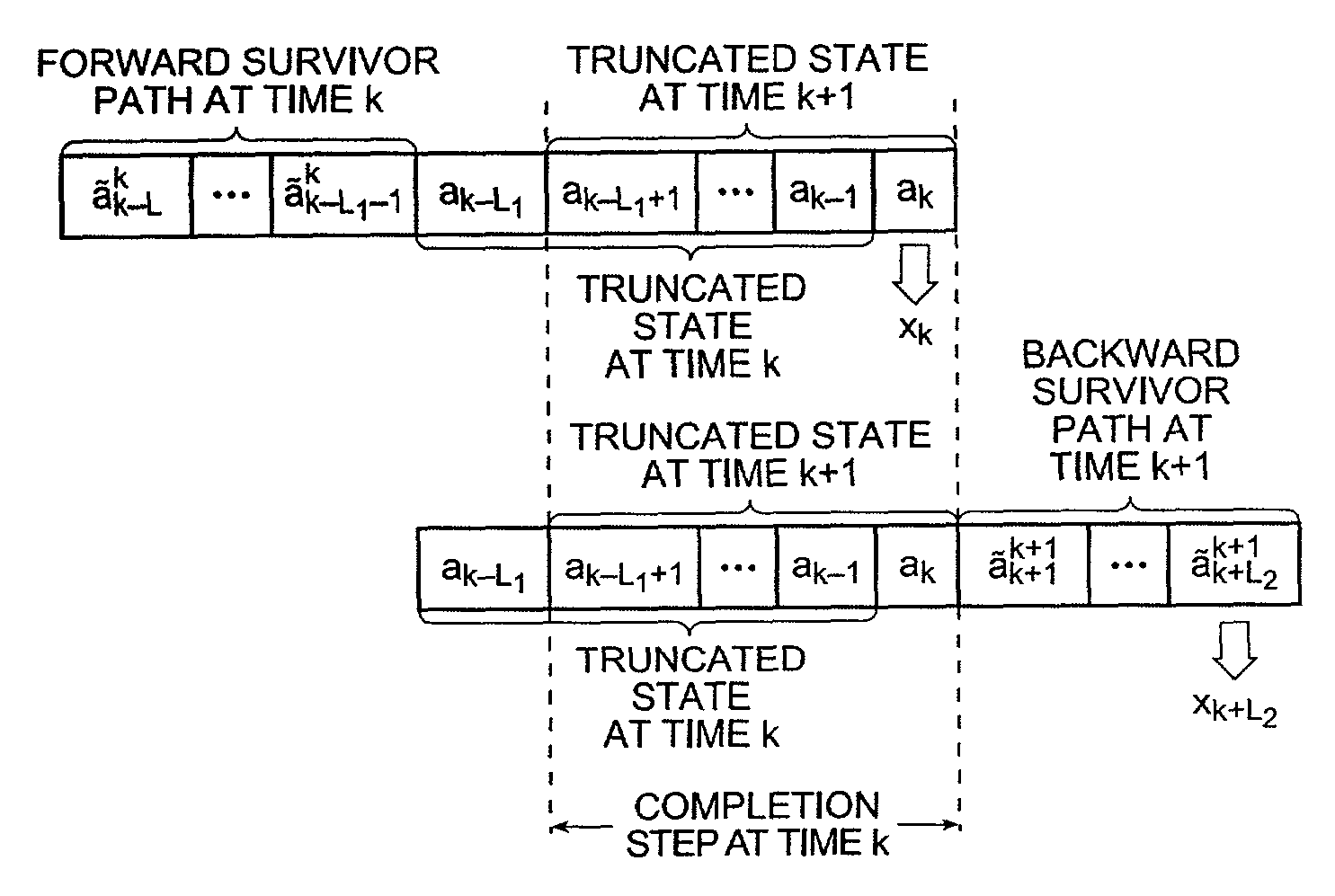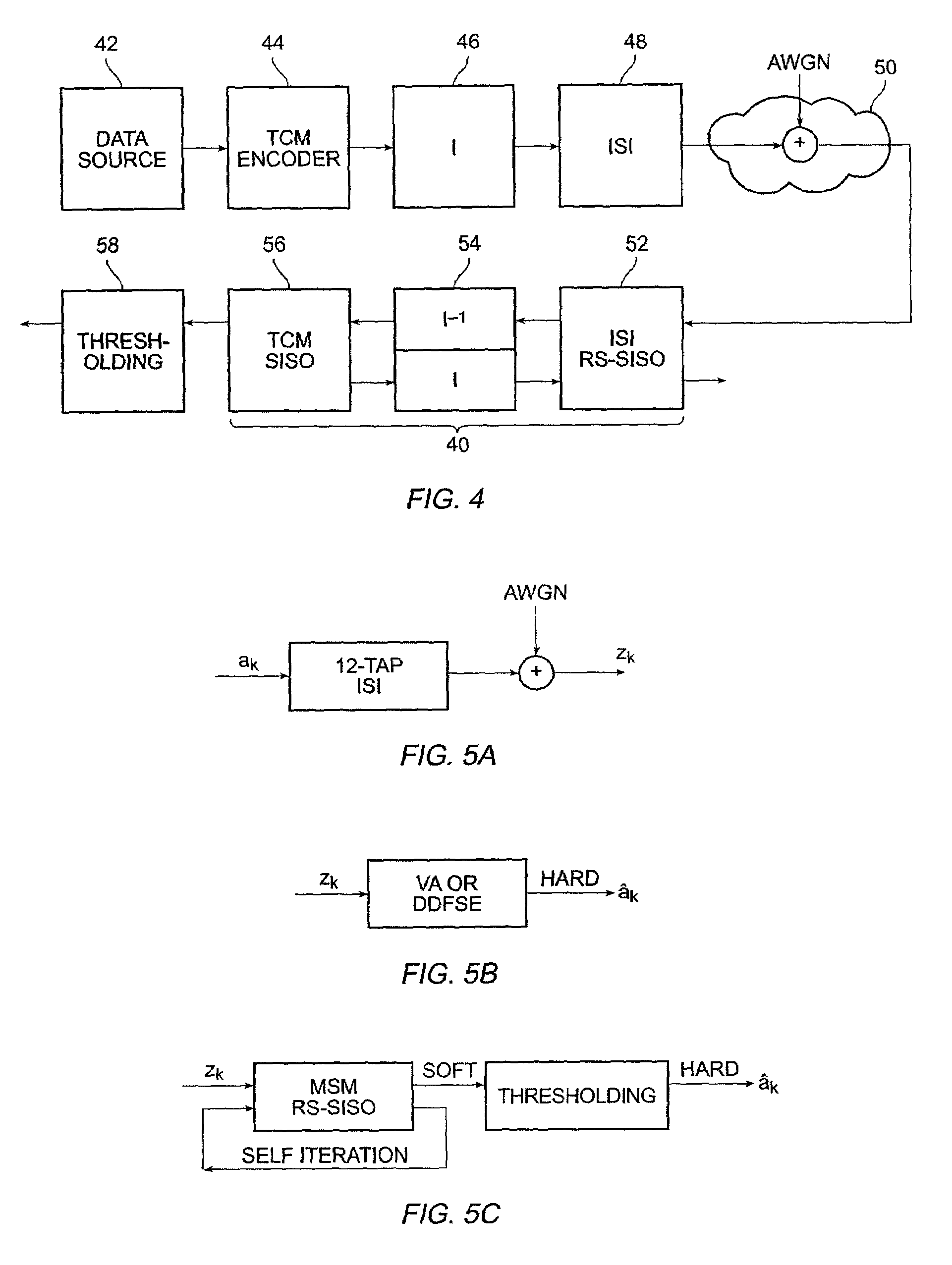Method for iterative and non-iterative data detection using reduced-state soft-input/soft-output algorithms for complexity reduction
a technology of soft-input/soft-output algorithms and iterative data detection, which is applied in the field of iterative and non-iterative data detection using reduced-state soft-input/soft-output algorithms for complexity reduction, can solve the problems of increasing the complexity of a siso algorithm exponentially with the memory, and it is not difficult to imagine how the complexity of such an algorithm can quickly overwhelm even the most advanced signal processing hardware and software, so as to improve the complexity and accuracy of data detection
- Summary
- Abstract
- Description
- Claims
- Application Information
AI Technical Summary
Benefits of technology
Problems solved by technology
Method used
Image
Examples
Embodiment Construction
[0025]FIG. 1 shows a digital communication system 10 employing a trellis coded modulation (TCM) encoder 14. Such a TCM encoder 14 is just one of the many processes that can be modeled as a finite state machine (FSM). Other such processes include, but are not limited to, encoders based on Turbo codes or other codes, near-capacity multi-user detection, near-optimal two-dimensional data detection, fading channels, and inter-symbol interference (ISI) channels. Referring to FIG. 1, the digital communication system 10 includes a data source 12 providing symbols defined on a particular set of symbols. For example, if a binary set of symbols is used, the symbols are selected from {0, 1}. The symbols from the data source 12 are transferred to the TCM encoder 14, which converts the symbols into encoded symbols according to the structure of the TCM encoder 14. The encoded symbols are then sent through a channel 16, which can add noise, such as additive white Gaussian noise (AWGN), and distorti...
PUM
 Login to View More
Login to View More Abstract
Description
Claims
Application Information
 Login to View More
Login to View More - R&D
- Intellectual Property
- Life Sciences
- Materials
- Tech Scout
- Unparalleled Data Quality
- Higher Quality Content
- 60% Fewer Hallucinations
Browse by: Latest US Patents, China's latest patents, Technical Efficacy Thesaurus, Application Domain, Technology Topic, Popular Technical Reports.
© 2025 PatSnap. All rights reserved.Legal|Privacy policy|Modern Slavery Act Transparency Statement|Sitemap|About US| Contact US: help@patsnap.com



